In this article, we present to you illustrations of Tunisian women in everyday traditional dress / costume dating from the end of the 19th century. There are very few photographs of Tunisian women dating from this time because society was such that women could not agree to be photographed. The only photographs available are then those of more or less undressed prostitutes posing for orientalist photographers such as Lehnert & Landrock.
In addition, it was not possible for a man to see a Tunisian woman in any other context than outside, where they were mostly completely covered. It therefore seemed interesting to us to share these watercolors made by Charles Lallemand, taken from two of his works dating from 1892. The author has never been able to enter a Tunisian house to observe the costume that women wore when they were at home but he was able to produce these illustrations with the help of detailed testimonies from European women who were able to go there.
Tunis and its surroundings
The author describes these illustrations as being those of Muslim women from Tunis in their homes dressed in their indoor clothes, and of a young girl in front of the Bardo well.

Charles Lallemand, Tunis et ses environs, 1892.
When these same women receive guests, here is the description that Western ladies give to the author:
"The costume is strange. The hairstyle first surprises. It is a small pointed cone, black or brown, embroidered with gold , somewhat reminiscent of the legendary hairstyle of Isabeau of Bavaria. This pointed cap is held around the head by a black ribbon which hides the hair , of which only a small band appears on one side of the forehead. This ribbon, in turn, is roughly hidden by a striped piece of cloth, white or brightly colored, which falls over the back like a little coat . This is the haik. The haik is held in place by a scarf which is tied around the head, the ends of which fall, floating, from behind.
A wide silk blouse, in a bright red , dresses this beautiful person ... up to the hips, no more. From there to the ankles, it's tight pants . These phenomenal pants, which Tunisian women wear both at home and in the street (I'm talking about the Jews, who, alone, go into the open), are an object of astonishment for Europeans and a luxury item, even of great luxury, for the natives. There are some whose gold and silver embroidery cost several thousand francs. There are others whose multicolored embroidery are true masterpieces of art.
A rich belt appears under the blouse; and from below this belt run cords which end in enormous tassels of precious trimmings, where gold is mixed with silk . These are the ends of the cord passed behind the scenes of the aforesaid pants. "
Charles Lallemand explains then that he saw Jewish women walking around in this extraordinary outfit in the streets of Tunis, and that he was therefore not surprised to learn that the costume of Muslim women was almost identical to that of Jewish.

Jewish women and girl from Tunis - Charles Lallemand, Tunis et ses environs, 1892.
While the conical headdress is famous for having been worn by Tunisian Jewish women, it was in fact, according to the author, also worn by Muslim women. The garment was actually quite similar with the difference that on the outside Muslim women wore a large piece of white cloth covering their entire body, called the sefseri .
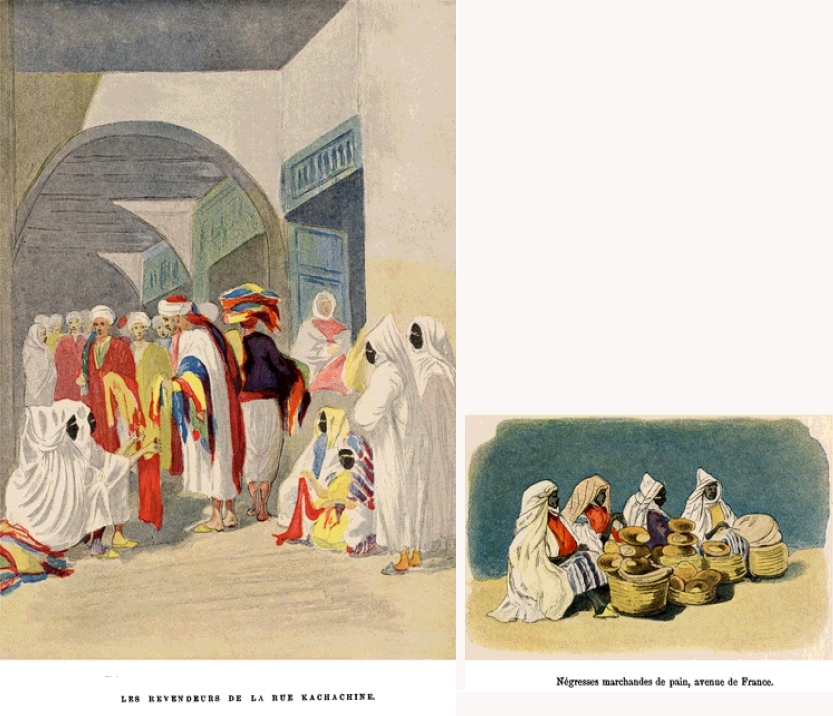
Tunisian women in sefsari - Charles Lallemand, Tunis et ses environs, 1892.
We observe in these illustrations that some women wear the qoufiya (pointed headdress) under their sefseri. The qoufiya remained in fashion until the very beginning of the 20th century and then disappeared. Today, sefsari is still worn by some older women but is tending to disappear.
The costume of nomadic women was quite different. Here is an illustration of the costume of nomadic women from around Tunis.
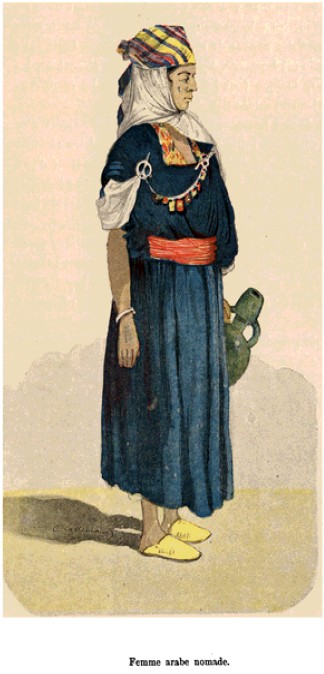
Arab nomad woman from northern Tunisia - Charles Lallemand, Tunis et ses environs, 1892.
Sousse
The author explains that for Muslim women, the first change occurs in Sousse, since it is no longer a white sefsari as in Tunis but a large black cloth worn by women. Already in Nabeul, women roam the city draped in species of brown blankets.
He also explains that another type of clothing is worn:
Throughout the Sahel, they are beginning to wear kinds of woolen blouses, with small sleeves, cut in the shape of a bag, and tied at the belt. This garment is unique in that it is, in all its height, divided into two colors, generally dark: dark blue and black, dark blue and brown, brown and black.
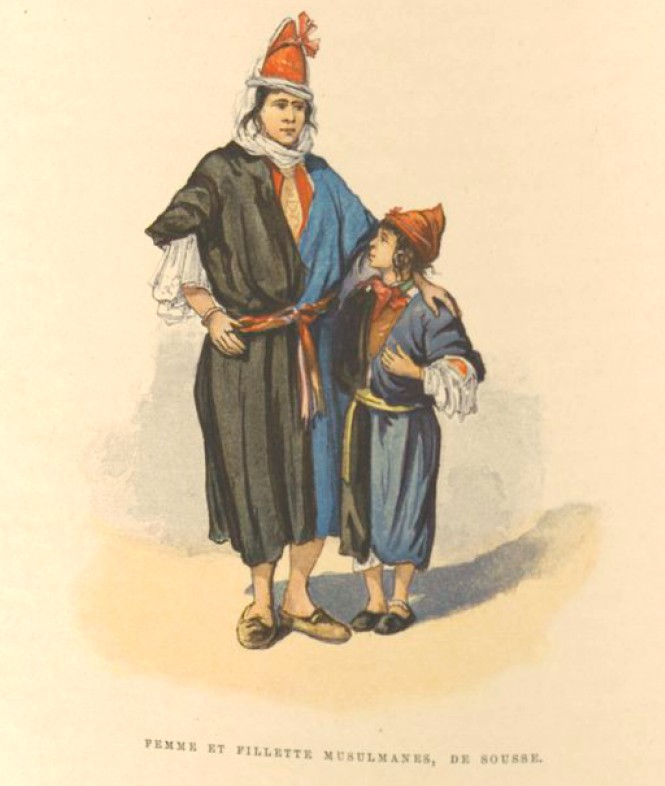
Muslim woman and girl from Sousse - Charles Lallemand, La Tunisie, pays de protectorat français, 1892.
Muslim women in Sousse always wore a conical headdress, but here surrounded by a red or yellow kerchief. According to the author, the Jewish women of Sousse and Sfax wore the same costume as in Tunis.
Sfax
It is only towards the south, in Sfax, that we see the woman's dress composed of two showy colors:
Similar to pages from the Middle Ages in cut and color arrangement, they are red on one side and blue on the other, or red and green, or red and yellow. The little cone of the hairstyle has disappeared; it is replaced by a handkerchief which envelops the hair, and enhanced with jewels. Does this mean that we no longer meet either gandouras, white turbans or embroidered with old gold silk? On the contrary, there are still many, because the bourgeoisie is generally, as in Tunis and Sousse, of the Moorish race.
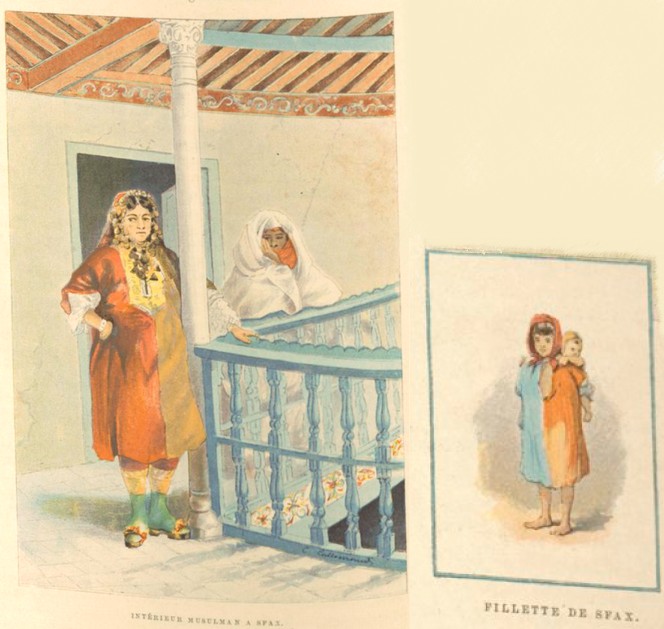
Women and girl from Sfax - Charles Lallemand, La Tunisie, pays de protectorat français, 1892.
Southern Tunisia
We notice that the costume changes in Gabès and is no longer two-tone vertically but made up of several pieces of colored fabrics predominantly blue and red. These two colors will be found in all women of southern Tunisia. The women wore a large dress tightened with a belt at the waist, as well as a piece of cloth hanging from the head. They also wear large rings on the ears.
Gabes

Gabes women in traditional dress - Charles Lallemand, La Tunisie, pays de protectorat français, 1892.
Zarzis region
The costume of the women of the Accaras, a tribe settled in the Zarzis region, is very similar:
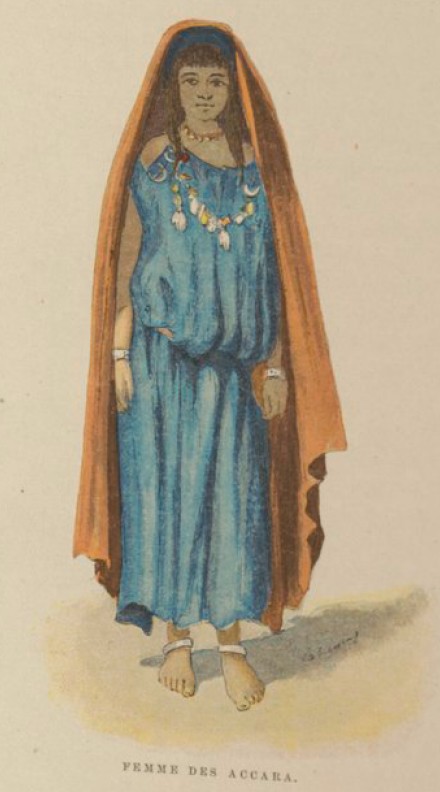
Woman of the Accaras - Charles Lallemand, La Tunisie, pays de protectorat français, 1892.
Southern nomads
We also find the colors red and blue among the nomads of the south.
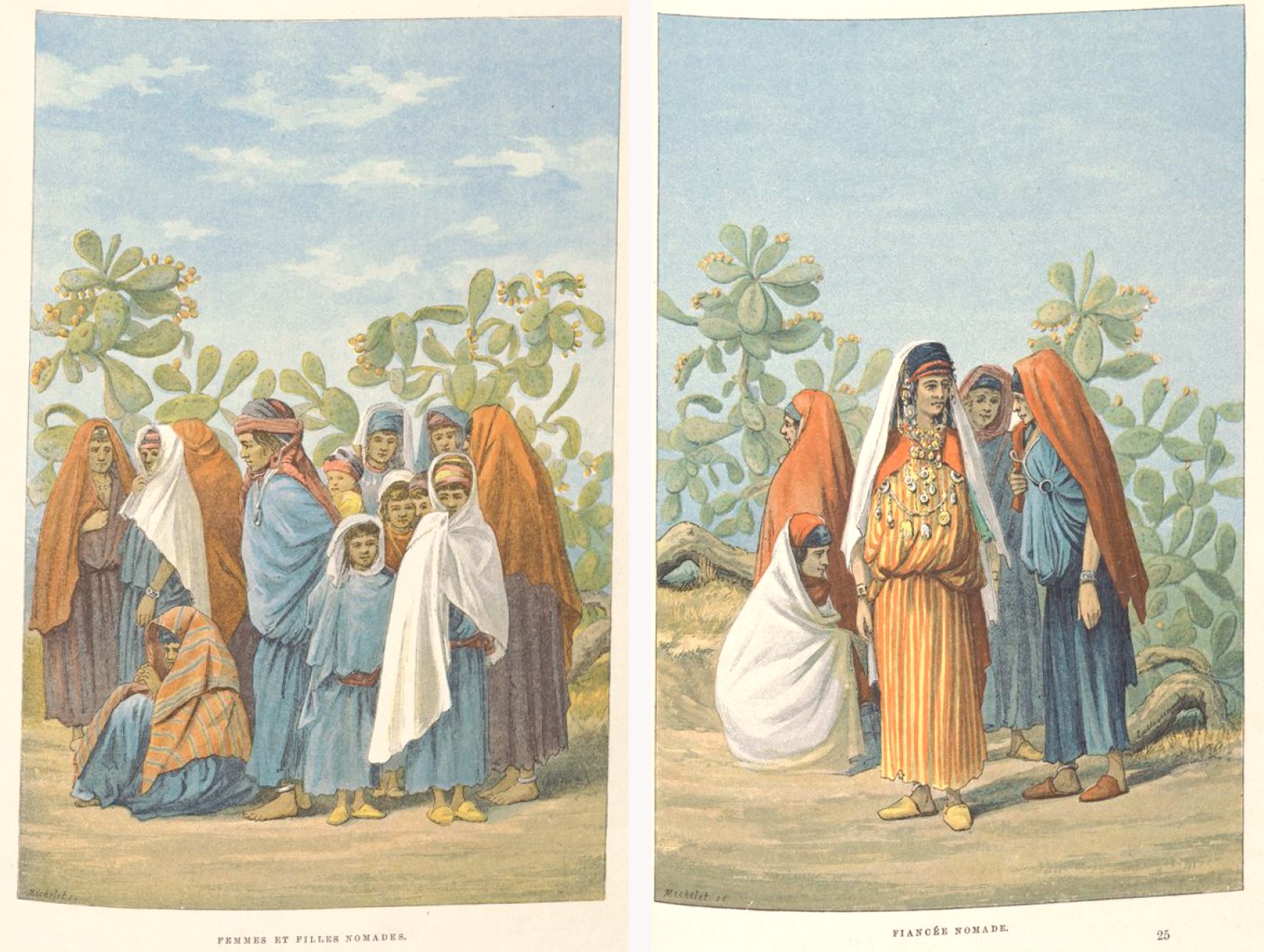
Nomadic women - Charles Lallemand, La Tunisie, pays de protectorat français, 1892.
Djerba
Djerba being an island, the costumes are very different from those of southern Tunisia. The clothes are much more colorful, adorned with multicolored stripes: blue, red, yellow, orange... Women also wear large jewels hanging from the head.
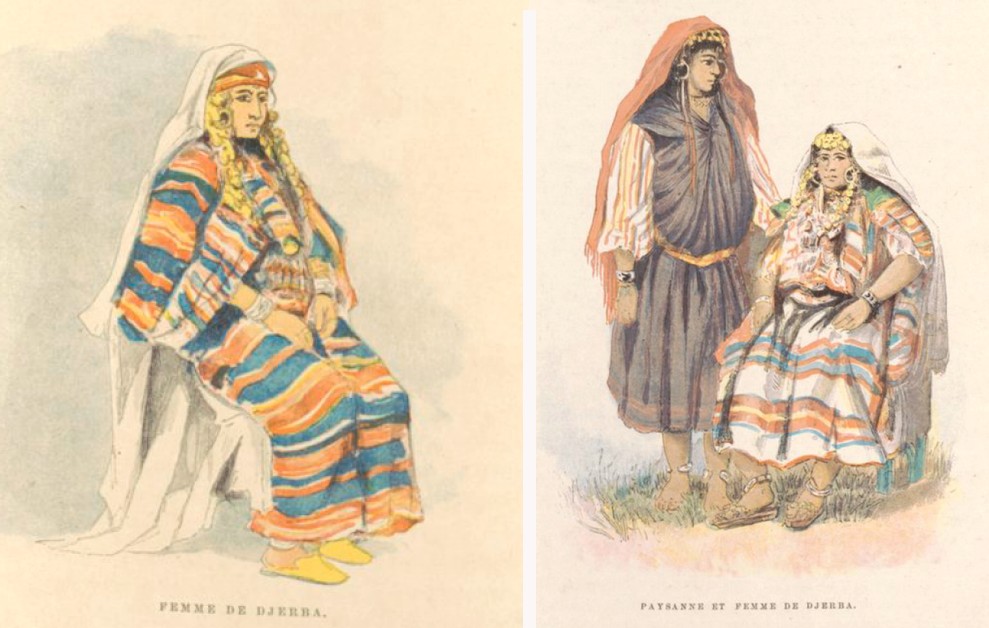
Women of Djerba in traditional dress - Charles Lallemand, La Tunisie, pays de protectorat français, 1892.
* * *
These illustrations give us a very precise idea of the costumes of the time. Today, these costumes are hardly worn anymore. Like everywhere else, most of the clothes found on the Tunisian market are made in China. The white sefseri is still worn by some elderly women in villages across Tunisia (including the south) but is tending to disappear.
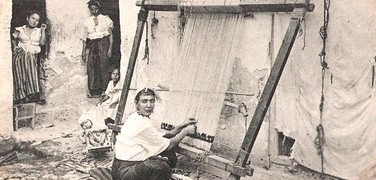 The loom: humanity's first machineRead more
The loom: humanity's first machineRead more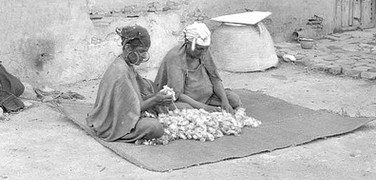 Preparing the wool13/11/2021Posted in: HandicraftRead more
Preparing the wool13/11/2021Posted in: HandicraftRead more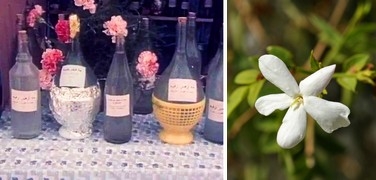 Floral waters / hydrolats in Tunisia: distillation and virtues29/01/2021Posted in: HandicraftRead more
Floral waters / hydrolats in Tunisia: distillation and virtues29/01/2021Posted in: HandicraftRead more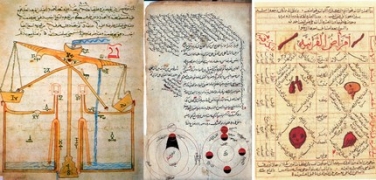 Arabic words in the French language13/01/2021Posted in: CultureRead more
Arabic words in the French language13/01/2021Posted in: CultureRead more Reviving the Tunisian carpet craftswomanship14/12/2020Posted in: HandicraftRead more
Reviving the Tunisian carpet craftswomanship14/12/2020Posted in: HandicraftRead more
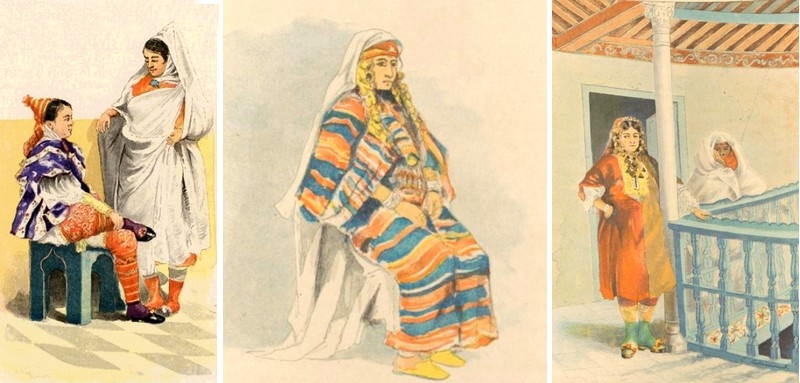










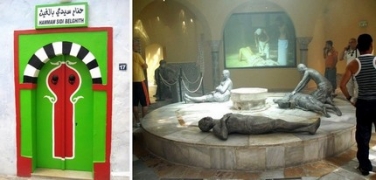

Leave a comment
Comments
auteur de l'article
By: David On 16/09/2022Bonjour,
j'aurais souhaité citer l'auteur de cet article cependant je n'ai que son prénom (Aurélie), serait il possible de connaitre le nom entier de l'auteur svp ?
Bien cordialement, `
Abigaël DAVID
Sarou
By: Sarou On 17/11/2019Bonjour !
Concernant Djerba, les femmes de Guellala, de Jim et de Sedouikech utilisent encore ces habits traditionnels.
Merci pour l'article et bonne continuation !
Alice
By: Alice On 10/06/2019moi qui n'y conaissais rien a cette culture me voila renseignée , merci beaucoup
Cédric
By: Cédric On 18/02/2019Je remarque que dans les habits d'autrefois, les couleurs sont légions. Je n'imaginais même pas vraiment une telle variété !
Merci pour ces découvertes.
Julien
By: Julien On 02/10/2016D'accord, je ne savais pas qu'à l'époque cela n'était pas péjoratif. Il est fort probable qu'avec l'histoire du peuple noir ce mot a justement eu différentes résonances selon les époques. Pour en revenir au style, je le trouve effectivement surprenant et coloré. Cela me rappelle ma grand-mère quand elle ôtait son voile elle y passait plus de 5 minutes tellement le nombre de couches de vêtements était important !
Aurélie
By: Aurélie On 19/09/2016En effet, mais il faut aussi nous replacer dans le contexte dans lequel l'auteur utilise le mot "négresse" pour décrire ses aquarelles, soit 1892. A l'époque ce mot n'avait pas encore de connotation péjorative et était purement descriptif. Certes ce mot a pris une connotation très péjorative avec le temps et est aujourd'hui insultant.
Julien
By: Julien On 18/09/2016Autant sur les styles présentés je suis totalement d'accord, car même actuellement quand on va en campagne on trouve encore des mamies habillées comme cela. Autant sur une des images le mot "négresse" est utilisé, je trouve cela insultant pour la communauté noire, c'est déplorable.